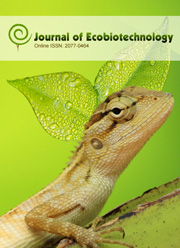Host – pathogen Interaction between the Soil Borne Fungi, Fusarium moniliforme and Maize Plants (Zea mays L.)
Abstract
Maize is one of the important food crop, it is succumbed to different types of biotic and abiotic constrains. A study was carried out to understand the mode of infection of F. moniliforme on maize. The observations revealed that the fungi can infect seeds, leaves, stalks and roots. Seed germination was inhibited by the pathogen infection. Inoculation of pathogen on leaves produced necrotic lesion which resembles leaf blight disease. While, the seedlings expressed toppling symptom, the stem portion above the soil surface showed rotted appearance similar to collar rot on fifth day after inoculation. When the F. moniliforme was inoculated into stalks, lesion development (6.5cmx0.5cm) was observed and also the fungi travelled from the inoculated node to the next node. In maize, Bio-chemical changes in healthy and F. moniliforme infected leaves were assessed. Protein, total phenol, peroxidase and polyphenoloxidase concentration was higher in infected plants when compared to uninfected samples. The pH of necrotic cells usually lower and in turn peroxidase activity was assumed to be higher. A positive correlation was observed between phenol accumulation and polyphenol oxidase activity (r = 1). This paper describes the methodology and results of the above said experiment.



 .
.